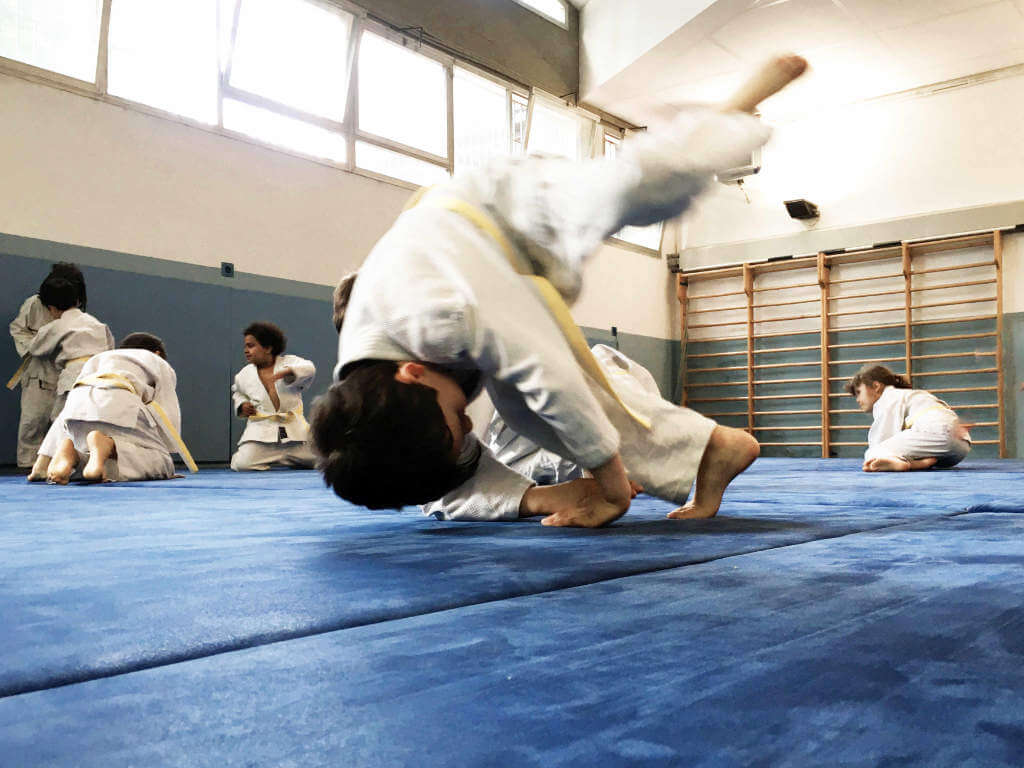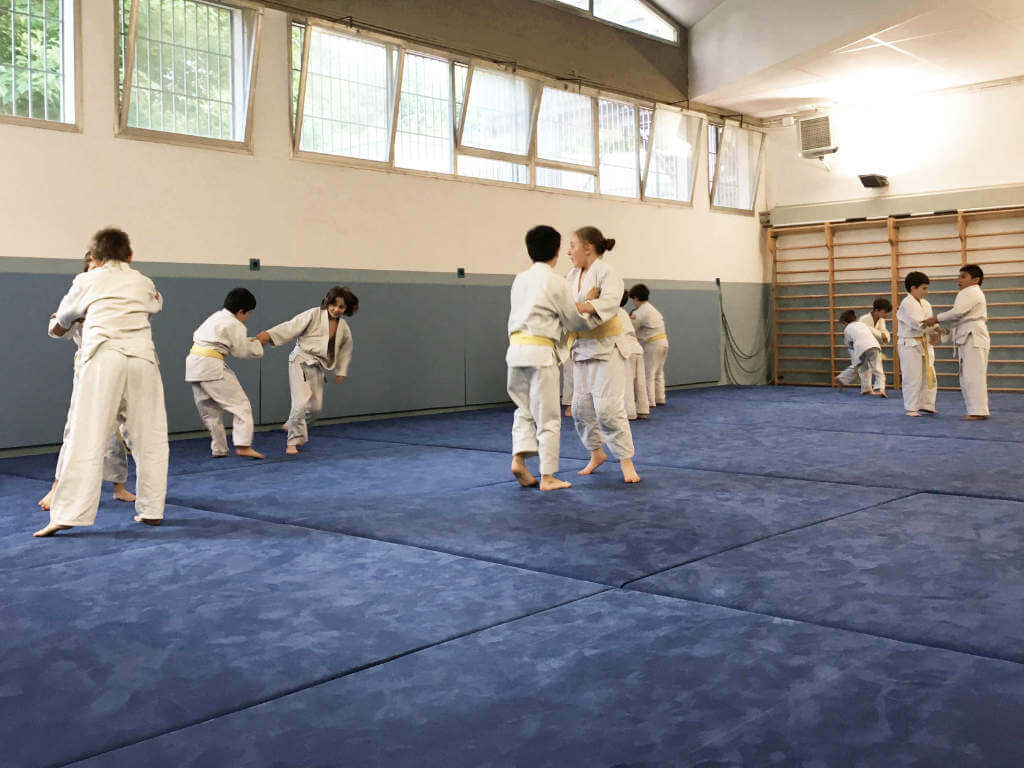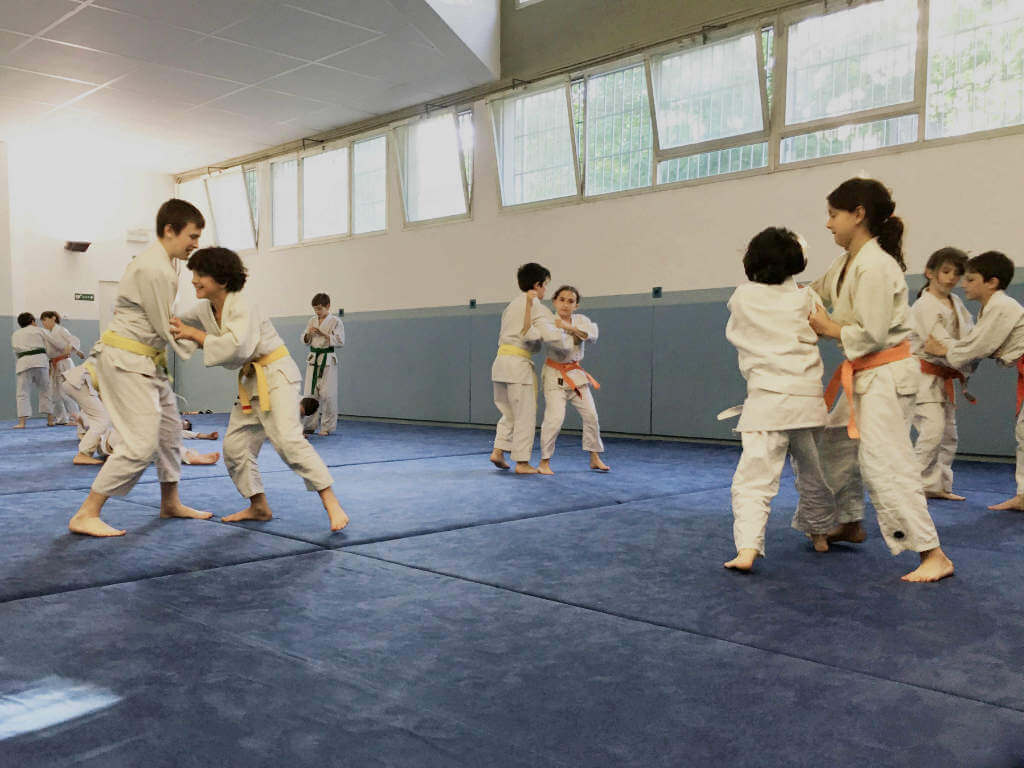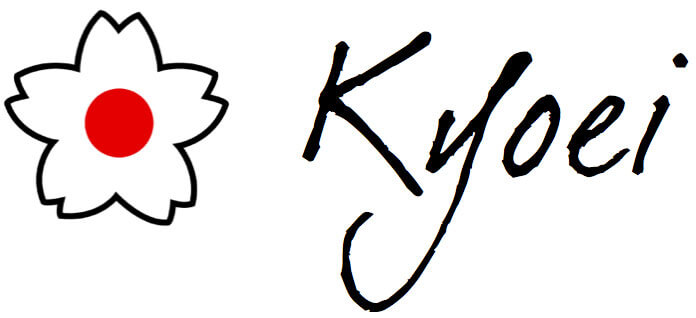Judo Junior
judo to us is culture, education and sport. Judo Junior classes are devided into age groups to better address the needs of each stage of growth and use the most suitable didactics, bringing children and adolescents to learn judo in a pleasant and profitable way.
Judo to us is passion. We think that is by feeling the passion for judo that young people will be willing to make the necessary effort needed to improve and progress in this discipline that has betterment in life as its goal.

Judo Bambini (6 to 7 years old)
Tuesday and Thursday from 17 to 18
On this age group objectives are:
- Autonomy: management things in the changing room, wearing the judo uniform and learning to fold it.
- Basic moving skills: consolidation of basic motor patterns, starting from crawling, somersaults and tumbles in the safe area given from the tatami.
- Fundamental: ushiro ukemi (back broke-falling technique) and introduction to kaiten ukemi (forward broke-falling technique)
- Fighting games: introduction to the dynamics of combat through games like sumo and similar.
- Judo Strategy: obtain a reaction and use it to your advantage.
- Technique: o-soto-gari; de-ashi-barai; O-uchi-gari; ko-uchi-gari.

Judo Fanciulli (8 to 9 years old)
Monday and Wednesday from 18 to 19
On this age group, in addition to those of the previous group, objectives are:
- moving skills at this level will be more complex, such as vertical and wheels, always useful in judo, .
- Fundamentals: ushiro ukemi (back broke-falling technique), yoko ukemi (side broke-falling technique) and kaiten ukemi (forward broke-falling technique)
- Judo strategy: exploit the opportunities offered by your opponent or get reactions on which you can apply your technique.
- Standing techniques: o-soto-gari; de-ashi-barai; o-uchi-gari; ko-uchi-gari; o-goshi; uki-goshi; hiza guruma.
- Ground fighting techniques: hon-kesa-gatame; kuzure-kesa-gatame; yoko-shiho-gatame; kami-shiho-gatame.
- Free exercise (randori)

Judo Ragazzi (9 to 10 years old)
Tuesday and Thursday from 18 to 19
Aims:
- Movement skills: the consolidation of the elements of previous courses.
- Fundamentals: ushiro ukemi (back broke-falling technique), yoko ukemi (side broke-falling technique) and kaiten ukemi (forward broke-falling technique).
- Judo strategy: exploit the opportunities offered by your opponent or get reactions on which you can apply your technique. Combinations of techniques.
- Standing techniques: o-soto-gari; de-ashi-barai; okuri-ashi-barai; o-uchi-gari; ko-uchi-gari; o-goshi; uki-goshi; hiza-guruma; ippon-seoi-nage; sasae-tsurikomi-ashi; tai-otoshi.
- Ground fighting techniques: hon-kesa-gatame; kuzure-kesa-gatame; yoko-shiho-gatame; kami-shiho-gatame; ushiro-kesa-gatame; kuzure-kami-shiho-gatame.
- Perfecting free exercise training (randori).

Judo Esordienti (middle school)
Monday and Wednesday from 19 to 20.
This course aims to achieve higher-level objectives for the pupils.
Aims:
- Movement skills: consolidation of the elements from previous courses.
- Fundamental: ushiro ukemi (back broke-falling technique), yoko ukemi (side broke-falling technique) and kaiten ukemi (forward broke-falling technique).
- Judo Strategy: omote (use opportunity); sen (get a reaction and use it); go no sen (counter attacks); hyoshi (combinations).
- Standing techniques: o-soto-gari; de-ashi-barai; okuri-ashi-barai; o-uchi-gari; ko-uchi-gari; o-goshi; ippon-seoi-nage; morote-seoi-nage; sasae-tsurikomi-ashi; tai-otoshi; hiza-guruma; harai-goshi; uchi-mata.
- Ground fighting techniques: osae-komi-waza; shime-waza; kwansetsu-waza.
- Free exercise training (randori).
- Introduction in competitions (shiai)
